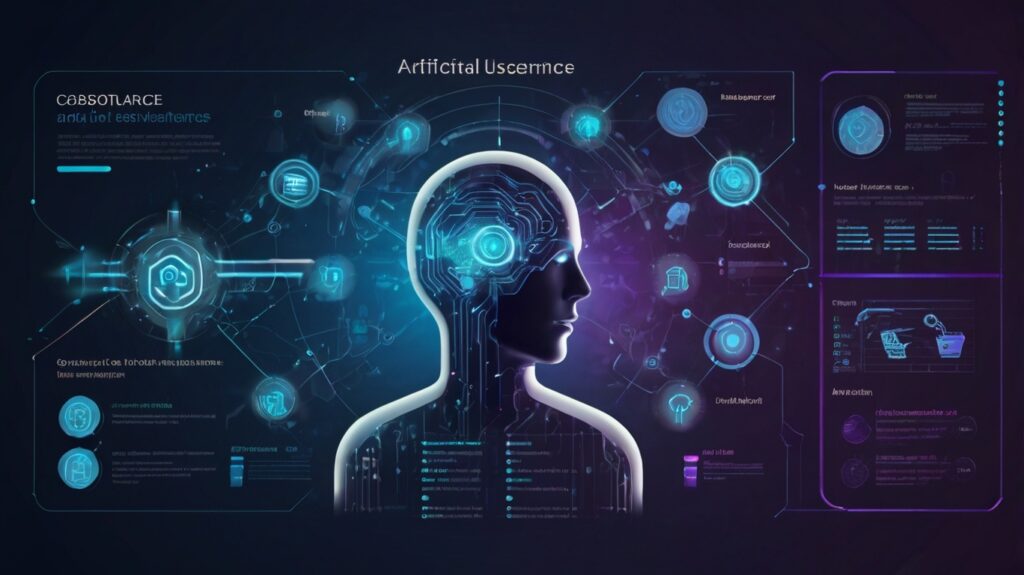In today’s rapidly evolving digital landscape, customer expectations are higher than ever—and businesses must meet these demands with unprecedented agility, personalization, and efficiency. Artificial Intelligence (AI) has emerged as a transformative force for sales and customer experience (CX), redefining how brands engage with customers, close deals, and provide 24/7 personalized support.
This comprehensive guide explores how AI tools are reshaping the business landscape in 2025 and beyond. From smart chatbots and predictive analytics to generative AI agents and real-time sentiment analysis, we’ll uncover the most impactful technologies transforming customer experience and driving exponential revenue growth.
Whether you’re a small business owner, marketing professional, or enterprise CX strategist, understanding these tools and how to implement them can help you stay ahead of the curve—and your competition.

Why AI Matters for Sales & Customer Experience in 2025
AI is no longer a luxury—it’s a competitive necessity. The convergence of data, cloud computing, and machine learning has enabled businesses to deliver real-time, hyper-personalized experiences that drive loyalty and increase conversions.
Key statistics underscore AI’s transformative impact:
- 65% of CX leaders consider AI a strategic necessity (Zendesk CX Trends Report 2024).
- Businesses that use AI see a 43% higher customer satisfaction score and a 37% increase in revenue.
- SMBs using AI for customer support report savings of up to $29,000 annually.
Real-world examples:
- Walmart is integrating AI super agents (like “Sparky”) to automate product discovery, shopping assistance, and order tracking.
- Lowe’s uses AI digital twins to optimize in-store layouts and provide a seamless omnichannel customer journey.
- Shopify’s Sidekick AI assistant helps merchants manage inventory, answer customer questions, and automate backend operations.
These examples illustrate a broader industry trend: businesses that effectively use AI are creating seamless, personalized, and efficient sales processes that customers love.
Core Types of AI Tools That Drive Sales & CX
Let’s explore the most impactful AI tools that businesses are using today:
a. Conversational AI & Chatbots
AI-powered chatbots like Gupshup, Intercom, and Conversica deliver 24/7 customer support, automate lead qualification, and guide customers through the sales funnel. These bots use NLP (Natural Language Processing) to interpret and respond to user queries naturally.
b. Predictive Analytics
Tools like Salesforce Einstein, Zoho Zia, and Gong use AI to predict customer behavior, forecast sales, and prioritize high-value leads. Predictive engines help sales teams make data-driven decisions, increasing close rates and customer retention.
c. Voice & Sentiment Analysis
Platforms like Uniphore and NICE analyze call data in real time to detect customer sentiment, agent stress, and engagement levels. This enables businesses to improve call center performance and reduce churn.
d. AI Agents & Virtual Assistants
AI agents like Lindy, Palona AI, and Shopify Sidekick handle sales-related tasks such as booking appointments, sending follow-ups, or managing inventory. These autonomous tools free up human reps to focus on complex sales conversations.
e. Personalization Engines
AdCreative.ai and Adobe’s AI-driven platforms enable dynamic content and product recommendations based on user behavior and preferences, significantly improving conversion rates.

Top AI Tools in Sales & CX for 2025
Here’s a comparison of the best AI tools transforming sales and CX:
| Tool | Features | Ideal For | Pricing |
|---|---|---|---|
| Lindy | Multi-agent automation, CRM integration | SMBs, startups | Freemium |
| Shopify Sidekick | Ecommerce AI assistant | Shopify merchants | Included in Plus |
| Conversica | AI-driven sales & marketing conversations | Enterprises, SaaS | $$$ |
| Copy.ai | Content generation for sales emails | Marketers, sales reps | $$ |
| iovox | Voice analytics for sales calls | B2B sales teams | Custom |
| AdCreative.ai | AI ad generation and creative optimization | Agencies, D2C brands | $$ |
| Highperformr | LinkedIn content & automation AI | Personal branding, sales | Freemium |
| Uniphore Q | Real-time sentiment & voice analytics | Call centers, enterprises | $$$ |
Real-World Case Studies
Walmart – AI agents like Sparky guide users through product selection, order tracking, and FAQs. Their deployment led to a 15% increase in online conversions.
Lowe’s – Digital twins use in-store sensor data and AI to dynamically re-arrange product placements, increasing in-store purchases by 11%.
Publicis Groupe – Acquired several AI startups to create emotional intelligence engines for ads, boosting click-through rates by over 40%.
Shopify – AI tools like Sidekick and Tariffguide.ai simplify operations and reduce merchant workload, especially in cross-border sales.
Benefits of Using AI for Sales & CX
- Faster response times – AI bots and assistants can reply instantly.
- Personalization at scale – Dynamic recommendations based on user data.
- Increased sales – Guided selling tools boost conversions.
- Cost savings – Reduced headcount and support costs.
- Data-driven insights – AI provides actionable analytics from unstructured data.
According to Shopify, brands using AI see 70% lower resolution times and 40% higher NPS (Net Promoter Score).
How to Implement AI Tools Effectively
Step 1: Define Your Goals – Do you want more leads? Faster support? Increased sales?
Step 2: Map the Customer Journey – Identify pain points AI can solve.
Step 3: Choose Tools Based on Integration Needs – Make sure tools integrate with CRM, helpdesk, eCommerce platform.
Step 4: Pilot & Measure – Test AI tools in a small segment. Use metrics like CSAT, lead conversion, AHT (Average Handling Time).
Step 5: Train Teams – Ensure your team knows how to work alongside AI.
Step 6: Monitor for Bias & Ethical Use – Watch for algorithmic bias and explainability gaps.

Risks and Ethical Considerations
While AI brings efficiency, there are risks:
- Loss of human touch – Over-automation can alienate users.
- Bias in algorithms – Sentiment AI can misinterpret tone.
- Privacy concerns – Sensitive data handling must follow GDPR/CCPA.
- Over-reliance – Teams may become too dependent on AI suggestions.
Be sure to maintain a human fallback for critical support situations.
Future Trends in AI for Sales & CX
- Autonomous AI agents will increasingly handle end-to-end sales cycles.
- Agent orchestration platforms like Zapier and Lindy will allow seamless workflows.
- AI Optimization (AIO) will replace traditional SEO strategies in eCommerce.
- Emotion-aware AI will better understand user feelings, not just words.
Conclusion & Action Checklist
AI tools are no longer experimental—they’re essential for any business aiming to scale in today’s digital economy. By embracing the right technologies, you can transform your customer journey, automate repetitive tasks, and unlock new levels of growth.
Action Checklist:
- Audit current sales and CX workflows.
- Identify areas for automation.
- Choose 1–2 AI tools to pilot.
- Track metrics (CSAT, revenue, AHT).
- Expand successful pilots across the business.
External Sources:
- https://www.zendesk.com/blog/ai-customer-experience/
- https://www.shopify.com/blog/ai-customer-experience
- https://www.businessinsider.com
- https://www.wsj.com
- https://www.reuters.com
- https://www.lindy.ai/blog/best-ai-sales-tools
- https://www.voguebusiness.com
- https://en.wikipedia.org/wiki/Conversica
- https://en.wikipedia.org/wiki/Uniphore